The Spanish sandwich, often referred to as “Bocadillo,” is more than just a culinary delight; it’s a tapestry of flavors and traditions that encapsulates the essence of Spain. As we embark on this journey, we’ll unwrap the layers of history, ingredients, and regional variations that make the Bocadillo a beloved staple across the country.
Table of Contents
- Tracing the Bocadillo’s Roots: A Flavorful Spanish Tale
- Bread and Beyond: The Foundations of Every Spanish Sandwich
- The Artisanal Breads Elevating the Bocadillo Experience
- Pan con Aceite: A Simple Spanish Delight
- Catalana: A Sandwich with Regional Flair
- Cheesy Indulgence: The Spanish Cheese Sandwich
- Bocadillo de Lomo: A Pork Lover’s Dream
- Serranito: Andalusia’s Hearty Offering
- Anchovy Euphoria: Spain’s Salty Sandwich Gem
- Bocadillo de Calamares: Madrid’s Crispy Classic
- Bocadillo de Tortilla: Spain’s Omelet Odyssey
- Bocadillo de Jamón: A Ham Haven
- Diving Deep into the Bocadillo Experience


David Piñata
David Piñata, a native of sun-soaked Andalusia, possesses a fervent passion for the vast culinary tapestry of Spain and beyond. With roots deeply embedded in the rich gastronomic traditions of the south, David’s palate knows no bounds. From the simplest of dishes to the most intricate of culinary creations, he relishes every bite with an enthusiasm that’s palpable in his writings. Join him as he takes you on a flavorful journey, exploring the essence of food and the stories it tells.
Tracing the Bocadillo’s Roots: A Flavorful Spanish Tale
In Spain, the humble sandwich takes on a form that’s deeply rooted in the country’s history and culture. Known locally as “bocadillo” or “bocata,” this isn’t just any sandwich. Imagine biting into a crusty roll, known as “barra de pan,” that’s freshly baked and filled with an array of delicious ingredients. That’s the essence of a bocadillo.
But it’s not just about the food; it’s about the experience. Picture this: You’re in the middle of a hectic workday, and you need a quick pick-me-up. You grab a bocadillo, and suddenly, even if just for a few minutes, life slows down as you savor each bite. Or maybe it’s the weekend, and you’re catching up with friends over a leisurely meal. The bocadillo is there too, serving as the perfect dish to share and enjoy in good company.


This sandwich is more than just a convenient meal; it’s a cherished part of daily life in Spain. Whether you’re a local or a visitor, young or old, the bocadillo has a way of making its way into your heart. It’s a simple yet profound culinary delight that captures the spirit of a nation. And that’s what makes it so special.
Learn Spanish at Vamos Academy, the Best Language Academy!!!
Study Spanish in Malaga
Enjoy the beaches in Malaga, while you improve your Spanish in Malaga
- Great teachers
- Wonderful experience
- Well-located in Malaga
- The future of Spain
Study Spanish in Buenos Aires
Try delicious empanadas in Buenos Aires, while you improve your Spanish in Buenos Aires
- Wonderful streets
- Delicious dishes
- The best place from Argentina
Study Spanish Online
You can learn Spanish online anywhere at anytime with us
- Anywhere, anytime
- Fantastic learning experiences
- Comprehensive explanations
- Always available
Bocadillo 101: Unwrapping Spain’s Iconic Sandwich
The bocadillo might seem like just another sandwich at first glance. But there’s so much more to it. What makes it truly special is the love and care that goes into selecting its ingredients. Imagine biting into bread that’s still warm from the oven, with a crust that’s just the right amount of crunchy and an inside that’s soft and fluffy.
Now, think about the fillings. From classic choices like meats and cheeses to gourmet delights like truffles, there’s a bocadillo for every palate. The possibilities are endless, and that’s the beauty of it. Each bocadillo tells a story of flavors and textures, making every bite a unique experience. It’s not just a sandwich; it’s a culinary adventure.
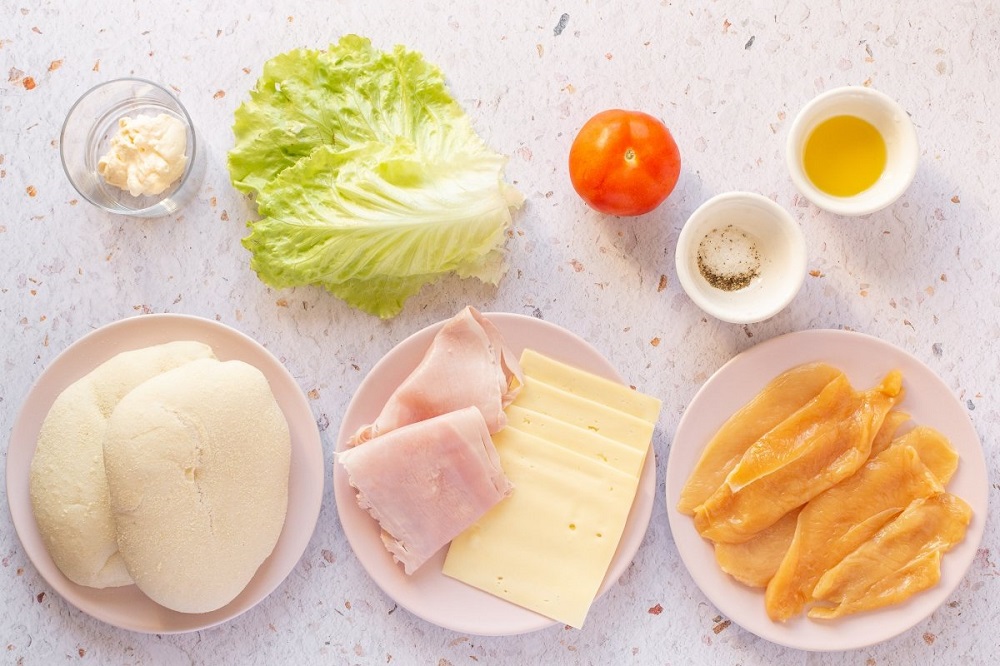

Bread and Beyond: The Foundations of Every Spanish Sandwich
The Artisanal Breads Elevating the Bocadillo Experience
In Spain, when you talk about sandwiches, it’s not just a one-size-fits-all concept. Here, there’s a clear difference between what they call a “sandwich” and a “bocadillo”. If you order a sandwich, you’ll typically get something made with soft white bread, known as “pan de molde”. This bread is gentle and fluffy, making it perfect for a light bite with various fillings.
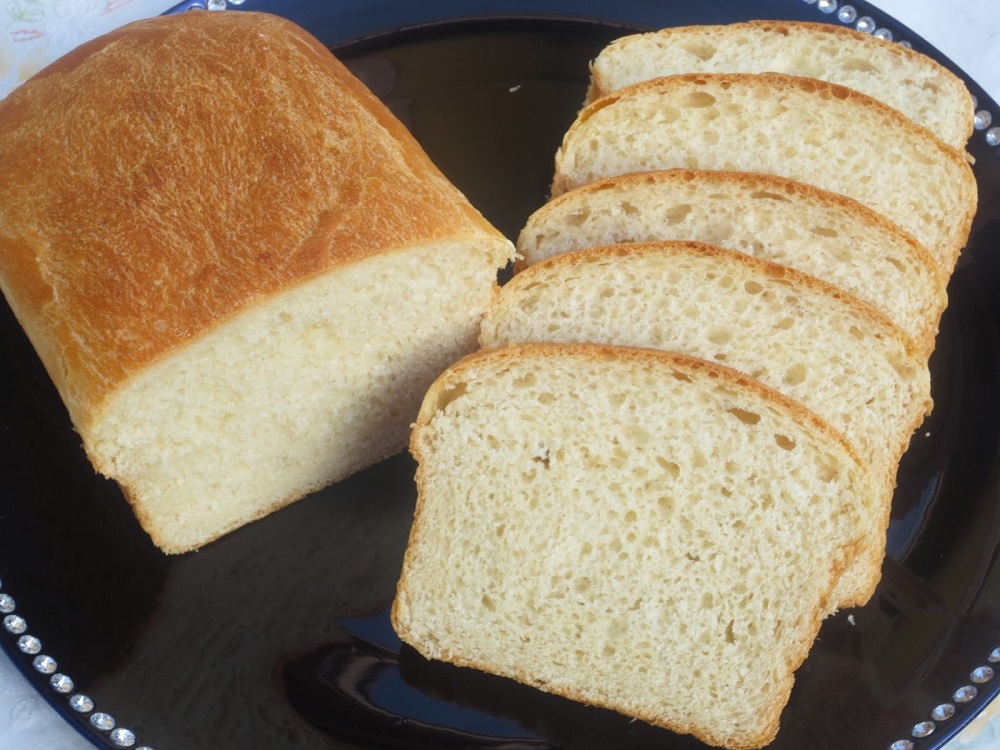

But if you’re in the mood for something more traditional, you’d go for a bocadillo. These are made with baguettes, or “barra de pan,” which have a crusty outside that beautifully contrasts with its soft inside. The crunch of the baguette enhances the rich flavors of classic Spanish fillings.
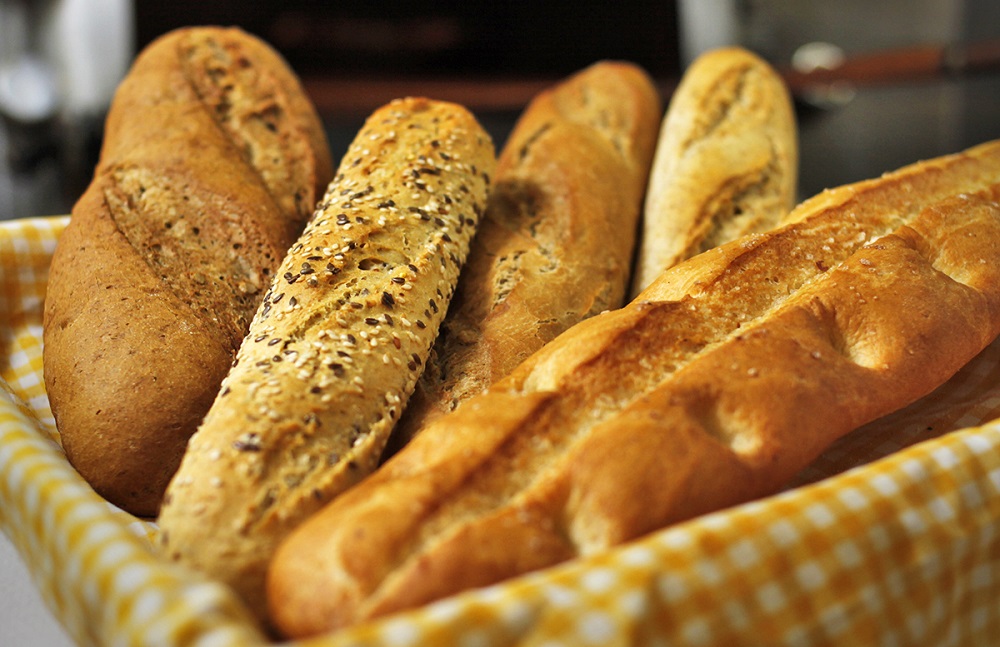

You may get hungry reading this blog, you can check these blogs for choosing a good resturant: Blogs about restaurants
And Spain’s love for bread doesn’t stop there. There’s the “mollete”, a soft round bread that’s perfect for breakfast. Then there’s the “pan cateto”, a rustic bread with a dense crumb, and the “pitufo”. a smaller version of the baguette, ideal for a quick snack. Each type of bread has its own unique texture and flavor, adding to the rich tapestry of Spanish culinary traditions. So, the next time you’re in Spain, remember: the bread you choose can shape your entire sandwich experience!
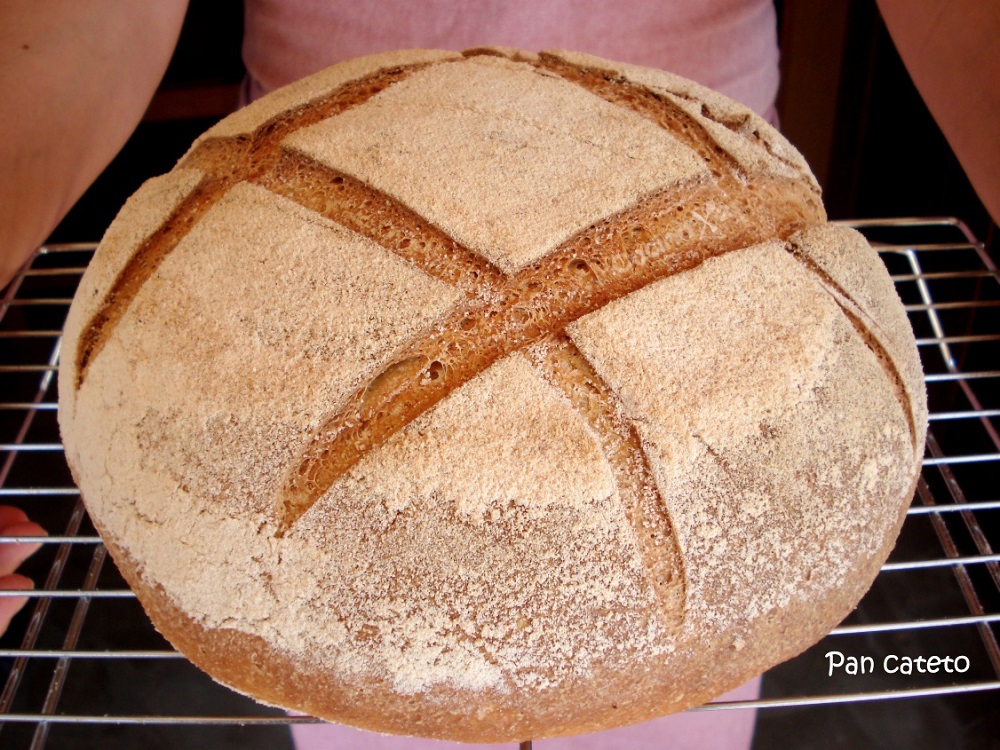

Pan con Aceite: A Simple Spanish Delight
“Pan con Aceite” is a heartwarming example of how the simplest ingredients can create the most delightful flavors. Directly translating to “bread with oil,” this treat is a staple in Andalusia, a region in southern Spain known for its rich culinary traditions.
In its purest form, “Pan con Aceite” is all about celebrating the bread and olive oil. In Andalusia, instead of just any bread, locals often opt for a fresh slice of ‘mollete’, a soft and fluffy bread that’s native to the region. This bread acts as a canvas, soaking up the golden drizzles of high-quality olive oil, which is another pride of Andalusia.
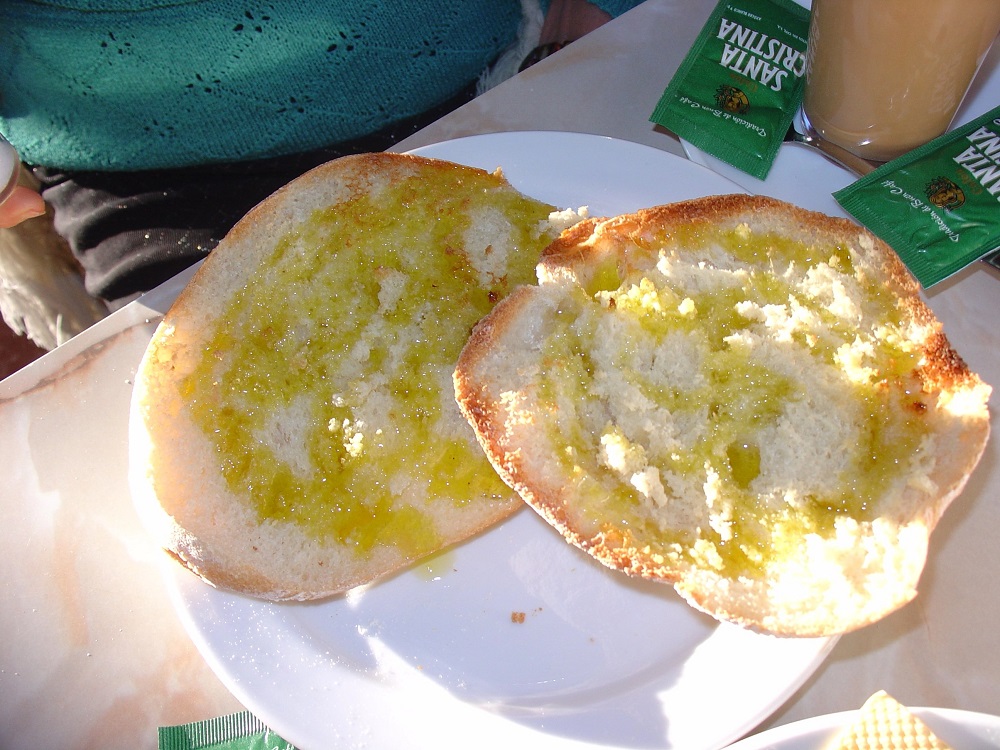

But the magic doesn’t stop there. To add depth to this minimalist dish, a ripe tomato is halved and gently rubbed over the bread’s surface, infusing it with a subtle tanginess. This method is reminiscent of “Pan Tumaca,” another beloved Spanish bread dish. For those who love a hint of spice, rubbing a clove of garlic adds a gentle kick. And for the final touch, a sprinkle of oregano or even some local Andalusian herbs elevates the flavors, making each bite a journey to the sun-kissed landscapes of southern Spain.
If you want to learn more about the Spanish oil, check this blog: Spanish Olive Oil: Its Health Benefits and the Mediterranean Diet
Catalana: A Sandwich with Regional Flair
The Catalana sandwich is a testament to Spain’s diverse culinary landscape, capturing the essence of its regional flavors. Named after Catalonia, a region in northeastern Spain, this sandwich is a harmonious blend of ingredients that reflect the area’s coastal and agricultural bounty.
At its heart, a typical Catalana boasts of roasted red peppers, which add a smoky sweetness, paired with the salty tang of anchovies. Some variations might also include a spread made from olives or tomatoes, adding depth and richness to each bite.
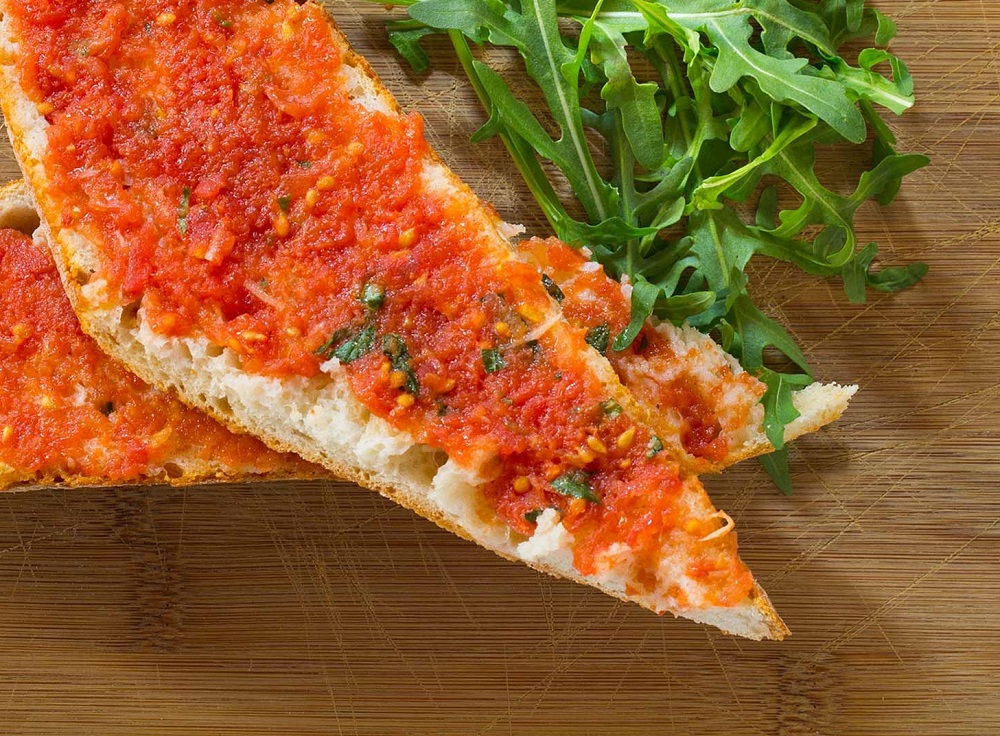

However, as with many traditional dishes, the Catalana sandwich has evolved differently across Spain’s vast regions. In the north, especially in Catalonia, the sandwich stays true to its origins. The use of local ingredients, like the famous “pa de pagès” (a type of Catalan bread), gives it a distinct identity.
You can learn more about the differences between the north and south of Spain here: The Diference Between North Spain and South Spain: Complete Guide
Contrastingly, in the south of Spain, the Catalana takes on a slightly different character. Influenced by Andalusian flavors, you might find additions like “jamon serrano” (cured ham) or even a drizzle of Andalusian olive oil. The bread might change too, with softer varieties like ‘mollete’ being preferred.
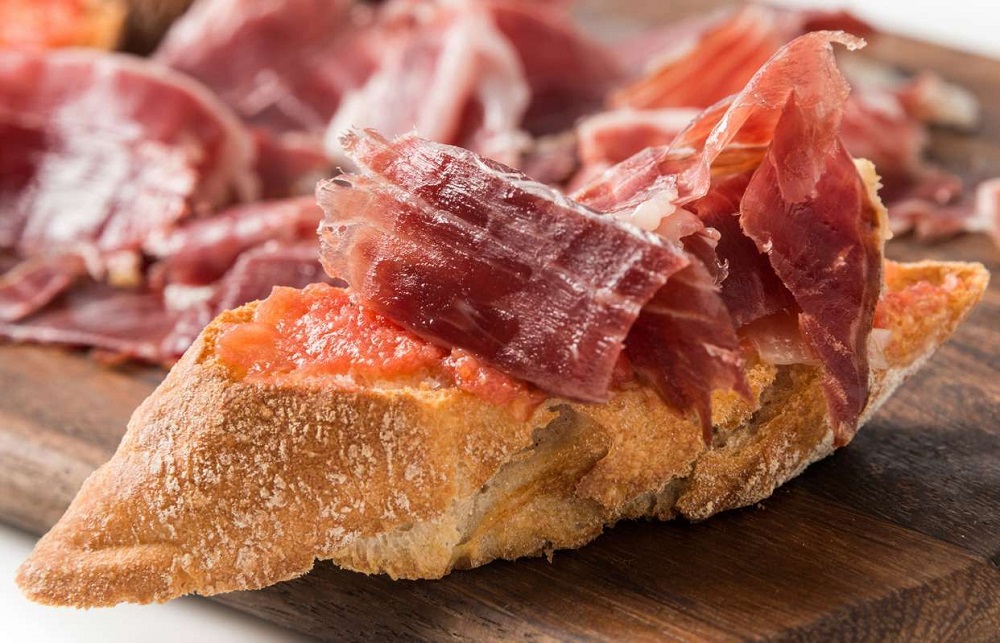

This regional variation is what makes the Catalana sandwich so special. It’s not just a meal; it’s a journey through Spain’s diverse regions, each bite offering a taste of its rich history and culture. Whether you’re savoring it in a bustling Barcelona café or a cozy Andalusian eatery, the Catalana promises a unique and delightful experience.
Cheesy Indulgence: The Spanish Cheese Sandwich
In Spain, cheese is not just an ingredient; it’s a passion. This love for cheese is beautifully showcased in the simple yet delightful cheese sandwich, a vegetarian favorite that holds a special place in Spanish cuisine. While the concept might sound basic, the magic lies in the choice of cheese, which can transform this sandwich into a gourmet experience.
Spain boasts a rich tapestry of cheeses, each with its own unique flavor and texture. Manchego, hailing from the La Mancha region, is perhaps one of the most iconic. With its firm texture and nutty undertones, Manchego adds a distinct depth to the sandwich, making it a popular choice.
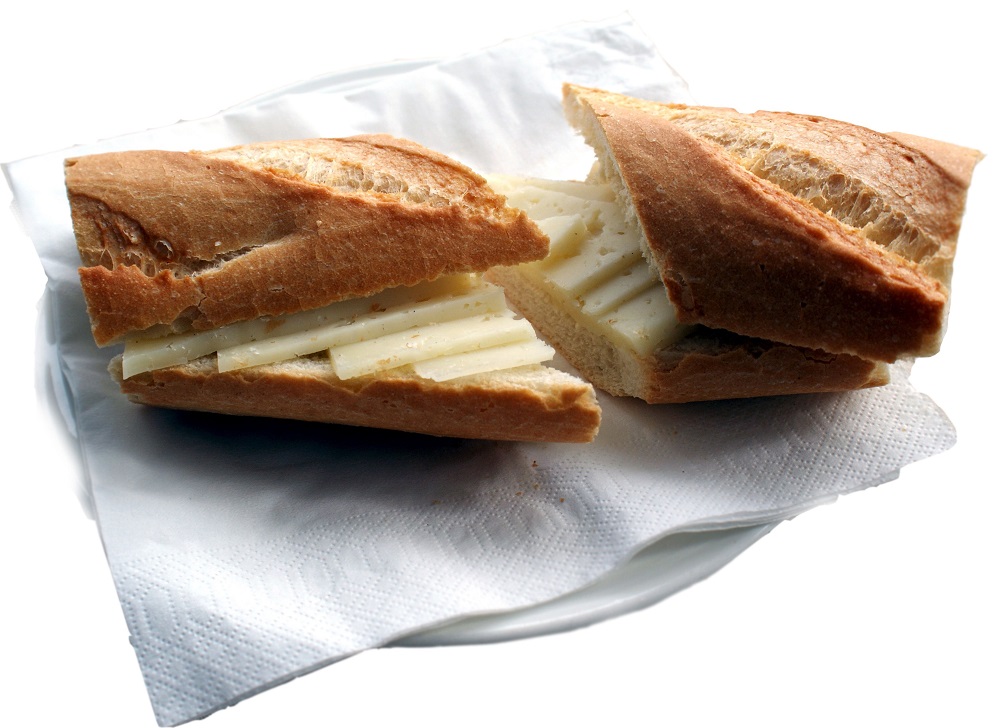

But the world of Spanish cheeses doesn’t stop at Manchego. There’s the creamy and tangy “Tetilla” from Galicia, the smoky “Idiazábal” from the Basque Country, and the blue-veined “Cabrales” from Asturias, to name just a few. Each region in Spain offers its own cheese specialty, and incorporating these into a sandwich allows for a myriad of flavor combinations.
For those looking to elevate their cheese sandwich, Spanish culinary traditions offer a plethora of options. A drizzle of golden Andalusian olive oil can add richness, while slices of ripe tomato bring freshness and a hint of sweetness. Some might even sprinkle on some “pimentón” (Spanish paprika) for a smoky kick.
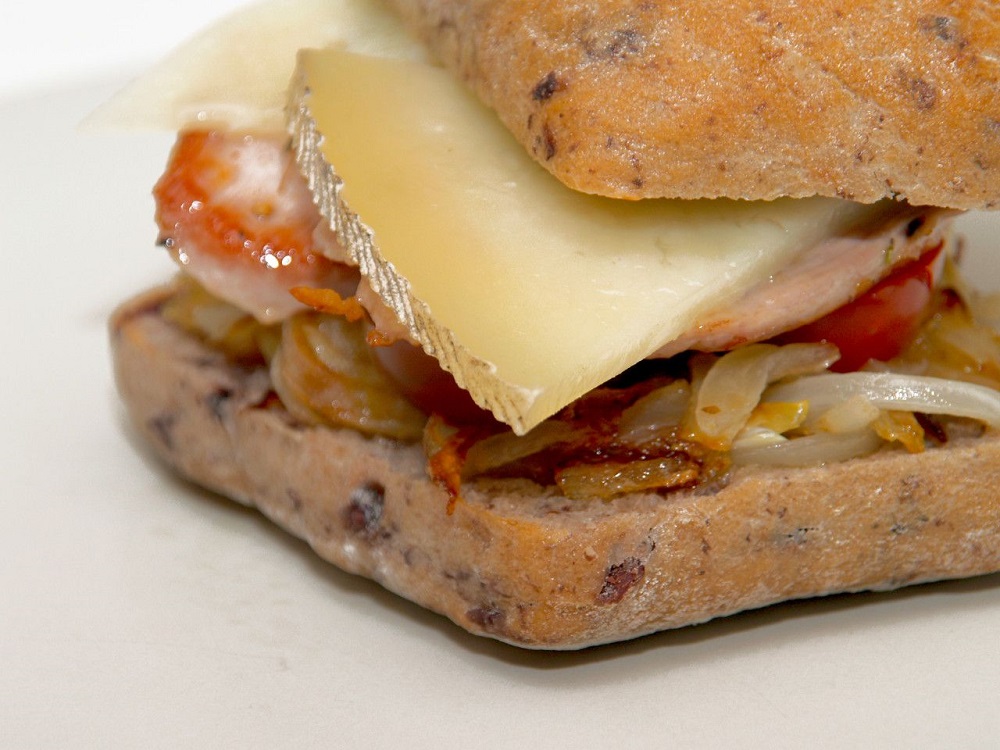

The Spanish cheese sandwich is a canvas, waiting to be painted with the vibrant flavors of the country’s diverse cheese varieties. Whether you’re a cheese connoisseur or someone looking for a simple yet flavorful bite, Spain’s cheese sandwiches promise a delightful culinary journey.
Bocadillo de Lomo: A Pork Lover’s Dream
In the bustling streets of Spain, amidst the aroma of freshly baked bread and sizzling meats, you’ll find a sandwich that’s a favorite among meat-lovers: the Bocadillo de Lomo. This isn’t just any sandwich; it’s a celebration of Spain’s love for hearty, flavorful ingredients.
At the heart of this sandwich is the lomo, or pork loin, which is tender and succulent. When cooked just right, it has a melt-in-the-mouth quality that’s hard to resist. While it’s a treat on its own, the true essence of the Bocadillo de Lomo shines when it’s served warm. Toasting or grilling the sandwich not only crisps up the bread but also enhances the meat’s flavors, making every bite a symphony of textures and tastes.
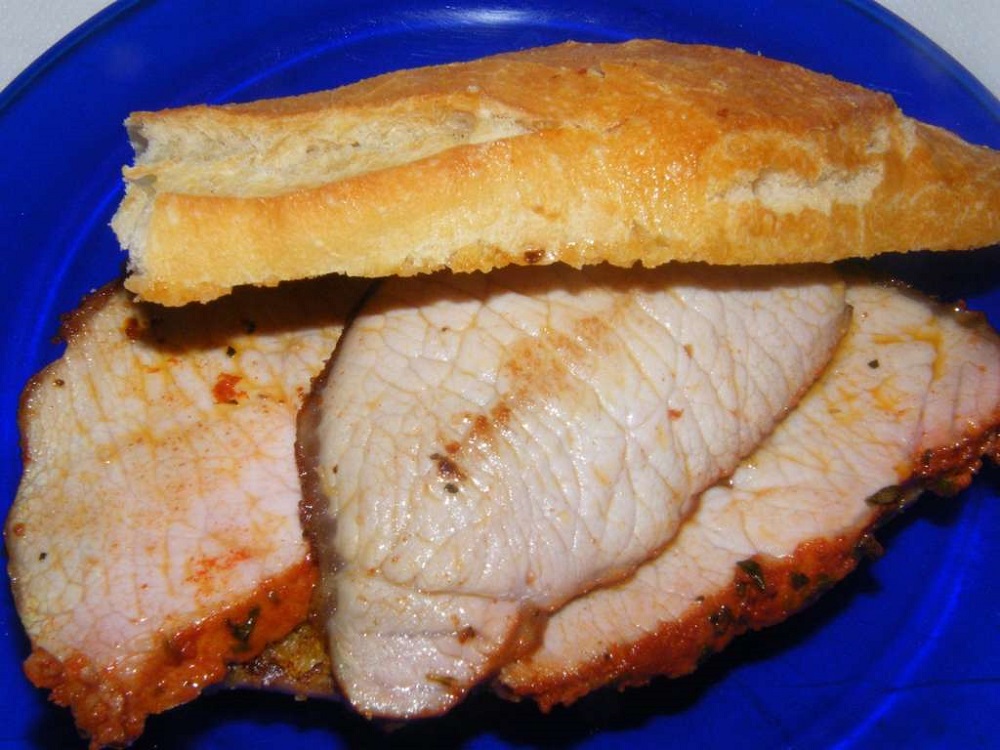

But the beauty of Spanish cuisine lies in its versatility. While the traditional Bocadillo de Lomo is a classic, there’s always room for a personal touch. A drizzle of rich Spanish olive oil can add a layer of smoothness, while slices of ripe tomato introduce a refreshing tang. For those who love a hint of spice, rubbing the bread with a clove of garlic can elevate the sandwich to new heights. And if you’re in the mood for some creaminess, a slice of local cheese, like Manchego or Tetilla, can be the perfect addition.
Serranito: Andalusia’s Hearty Offering
From the sun-kissed landscapes of Andalusia in southern Spain comes a sandwich that’s a true feast for the senses: the Serranito. This isn’t just a quick bite; it’s a culinary journey that captures the essence of Andalusian flavors and traditions.
At the heart of the Serranito is its rich filling. Imagine tender pork loins paired with the salty goodness of serrano ham. Add to that the smoky flavor of fried green peppers and the refreshing juiciness of tomato slices. Each ingredient plays its part, coming together to create a symphony of tastes and textures.
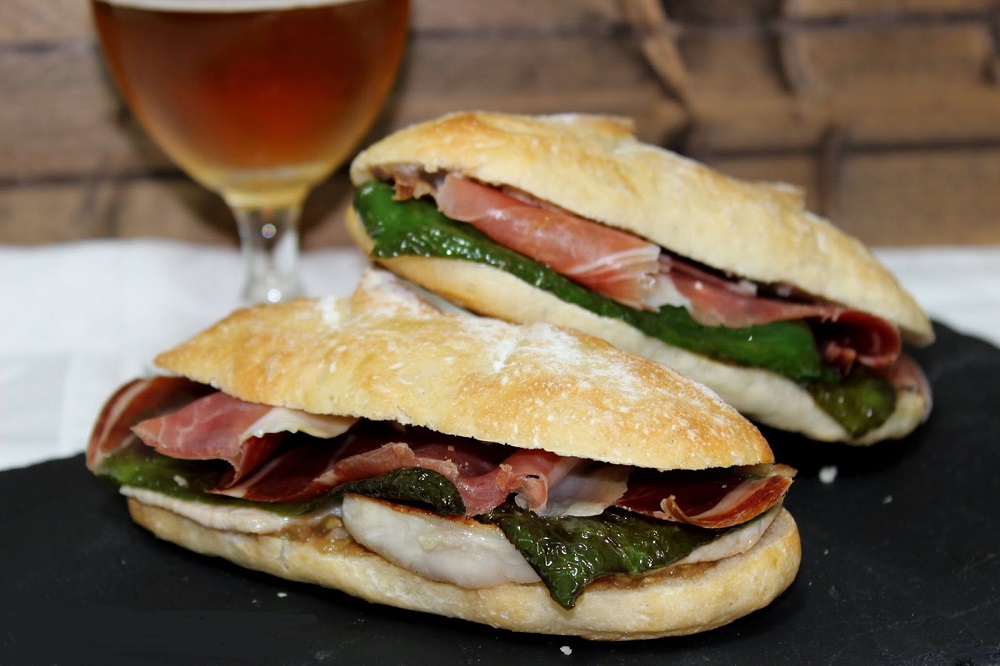

But what’s a good sandwich without the perfect bread? In Andalusia, the choice is clear. The Serranito is typically served on either “viena andaluza,” a soft and slightly sweet bread, or “mollete,” a fluffy bread native to the region. Both breads provide the perfect backdrop for the sandwich’s robust fillings, soaking up the flavors and adding their own unique touch.
And while the traditional Serranito is a favorite among many, Andalusian cuisine is all about innovation and variety. Some versions of the sandwich swap out the pork for chicken, introducing a lighter yet equally flavorful alternative. This twist offers a different taste experience while staying true to the spirit of the original.
Anchovy Euphoria: Spain’s Salty Sandwich Gem
For many, the idea of an anchovies sandwich might raise an eyebrow. But in Spain, where culinary traditions are rich and diverse, this sandwich is a beloved treat. It’s a beautiful blend of the salty and briny flavors of the sea, captured in the humble anchovy.
Anchovies, small and silvery, are a staple in Spanish cuisine. They often grace the tables as tapas, served either in olive oil or vinegar. Their distinct taste, a mix of saltiness with a hint of the ocean, makes them a favorite among many. When paired with the softness of fresh bread, the result is a sandwich that’s both simple and flavorful.
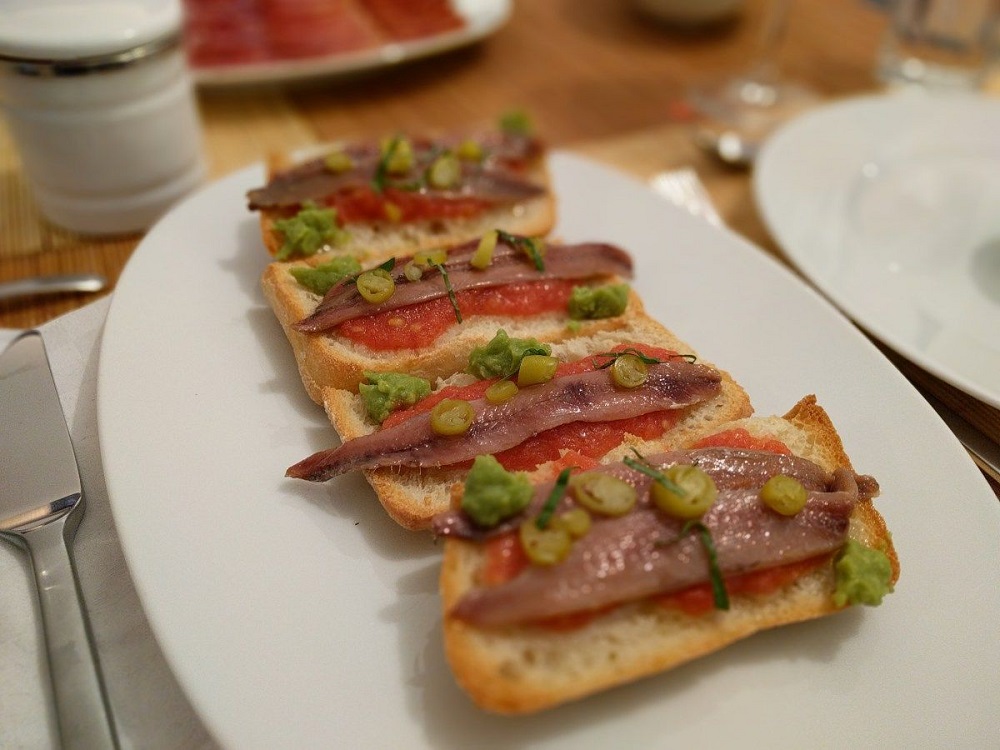

But the beauty of Spanish cuisine lies in its adaptability. While the basic anchovies sandwich is delightful on its own, there’s always room for a personal touch. Slices of ripe tomato can add a refreshing contrast to the saltiness of the anchovies. For those who love a bit of creaminess, a slice of local cheese can be the perfect addition. And if you’re in the mood for some heat, a few slices of green peppers can elevate the sandwich to a whole new level.
Bocadillo de Calamares: Madrid’s Crispy Classic
Imagine walking through the lively streets of Madrid, with its vibrant energy and the hum of conversations filling the air. Amidst the city’s many culinary delights, there’s one sandwich that stands out and captures the heart of both locals and visitors: the Bocadillo de Calamares.
This isn’t just any sandwich. The Bocadillo de Calamares is a celebration of the sea, brought to life in the heart of Spain’s capital. Picture golden, crispy calamari rings, fresh out of the fryer, tucked lovingly inside a soft baguette. Each bite offers a delightful crunch, followed by the tender and flavorful calamari.
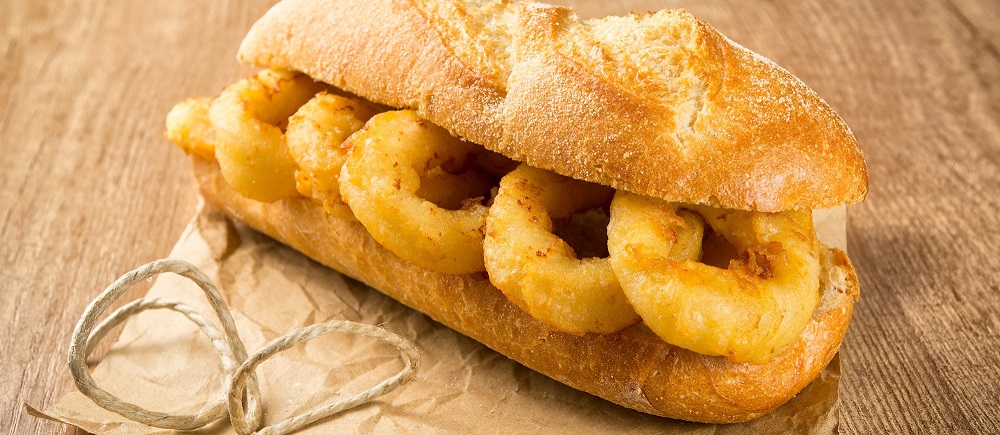

But the magic of this sandwich doesn’t stop at the calamari. A generous squeeze of fresh lemon juice adds a zesty kick, brightening up the flavors. And for those who love a touch of creaminess, a dollop of aioli on the side or spread on the bread is the perfect complement. This garlicky mayonnaise elevates the sandwich, making it a culinary experience to remember.
While you can find the Bocadillo de Calamares in many parts of Spain, it holds a special place in Madrid. The bustling Plaza Mayor, with its historic buildings and lively atmosphere, is often dotted with locals and tourists alike, savoring this iconic sandwich. Whether enjoyed as a quick lunch or a leisurely snack, the Bocadillo de Calamares is a testament to Madrid’s rich culinary heritage.
Bocadillo de Tortilla: Spain’s Omelet Odyssey
Venture into any café or tapas bar in Spain, and amidst the tantalizing array of dishes, you’ll likely spot a timeless favorite: the Bocadillo de Tortilla. This sandwich is a beautiful embodiment of Spanish comfort food, bringing together simple ingredients to create a culinary masterpiece.
At the heart of this classic is the tortilla española, Spain’s beloved omelet. Unlike the thin omelets many might be familiar with, the tortilla española is a thick, hearty affair. It’s crafted with layers of thinly sliced potatoes and caramelized onions, all held together by fluffy, whisked eggs. The result is a rich and savory pie-like dish, golden on the outside and soft within.
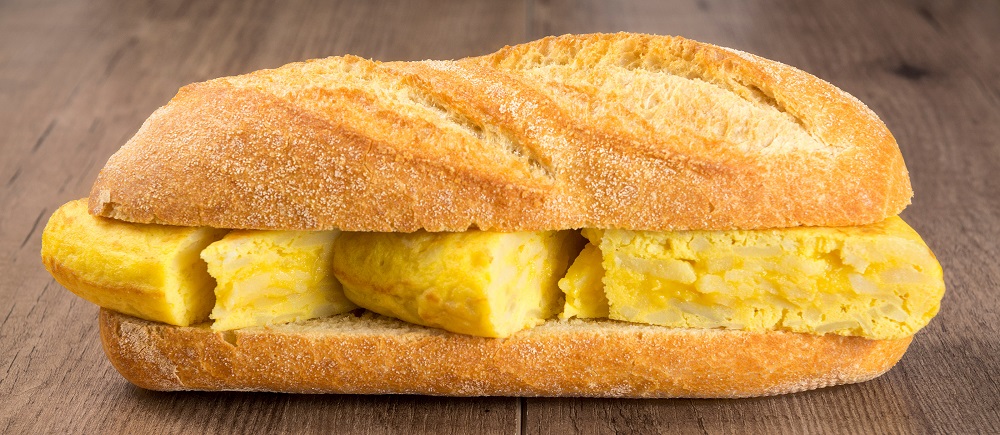

Now, imagine taking a generous slice of this omelet and placing it between two pieces of fresh bread. That’s the Bocadillo de Tortilla. Every bite offers a delightful mix of textures – the softness of the omelet contrasted with the crustiness of the bread. It’s a symphony of flavors, with the earthiness of the potatoes, the sweetness of the onions, and the richness of the eggs playing in perfect harmony.
While the Bocadillo de Tortilla is delicious on its own, many cafes and bars offer variations to cater to different tastes. Some might add a smear of aioli for a garlicky kick, while others might introduce a slice of cheese or ham for added depth.
Bocadillo de Jamón: A Ham Haven
In the world of Spanish sandwiches, the Bocadillo de Jamón holds a place of reverence. It’s a deceptively simple creation, yet its flavors are profound, capturing the very essence of Spain’s culinary prowess.
The star of this sandwich is, without a doubt, the Iberian ham. Known as “jamón ibérico” in Spain, this isn’t just any ham. It’s a product of meticulous care, tradition, and time. Derived from the Iberian pig, the ham is cured for months, sometimes even years, allowing it to develop a rich, complex flavor profile. When thinly sliced, it reveals a beautiful marbling of fat, which melts in the mouth, releasing a symphony of nutty, savory, and slightly sweet notes.
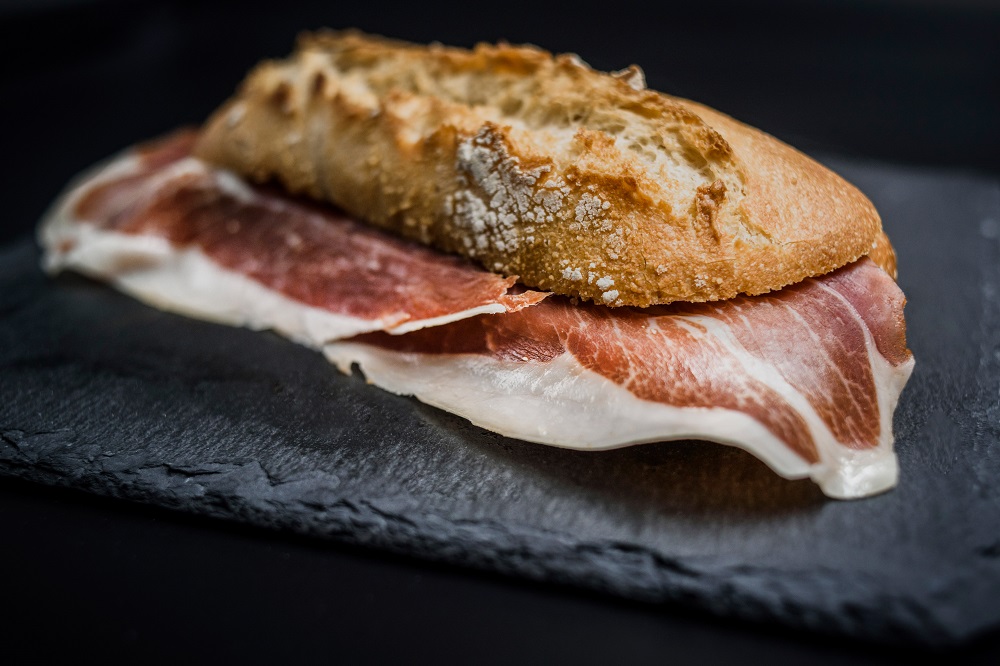

Now, take this exquisite ham and lay it on a fresh baguette or a slice of rustic Spanish bread. That’s the Bocadillo de Jamón. There are no fancy sauces or additional toppings needed; the quality of the ham speaks for itself. Every bite is a celebration of texture and taste, with the crusty bread providing the perfect counterpoint to the tender, melt-in-your-mouth jamón.
The Bocadillo de Jamón is more than just a sandwich; it’s a journey through Spain’s rich history of charcuterie. It’s a testament to the country’s dedication to preserving traditional methods and prioritizing quality above all else. Whether you’re savoring it in a bustling market in Madrid or a quiet café in Malaga, this sandwich offers a taste of Spain’s heart and soul, one delicious bite at a time.
Diving Deep into the Bocadillo Experience
The bocadillo is more than just a sandwich in Spain; it’s a tapestry of flavors, textures, and stories woven together over centuries. Each variant, from the humblest to the most elaborate, tells a tale of the regions, the people, and the traditions that have shaped Spanish cuisine.
Imagine starting your day with a Pan con Aceite. This simple delight, with its drizzle of golden olive oil on fresh bread, speaks of Spain’s love for pure, unadulterated flavors. It’s a nod to the sun-kissed olive groves that dot the landscape and the age-old tradition of olive oil production.
Then there’s the meaty Serranito, a hearty sandwich that’s a feast for the senses. Packed with pork loins, serrano ham, and peppers, it’s a celebration of Andalusia’s vibrant culinary scene. Every bite transports you to the lively streets of Seville or the rustic charm of Granada, offering a taste of southern Spain’s warmth and hospitality.
But these are just two examples in a vast sea of bocadillo varieties. Each region, each town, and even each household might have its own cherished version, passed down through generations. Whether it’s the coastal flavors of the Bocadillo de Calamares or the earthy goodness of the Bocadillo de Tortilla, every sandwich is a chapter in Spain’s rich culinary narrative.
As we come to the end of our exploration, it’s evident that the Bocadillo is not just a sandwich; it’s a reflection of Spain’s rich cultural and culinary heritage. From the simple Pan con Aceite to the indulgent Bocadillo de Jamón, each variant tells a story of regions, traditions, and the Spanish zest for life. Whether you’re a seasoned traveler or a curious foodie, the world of Spanish sandwiches invites you to savor, celebrate, and discover the flavors that have enchanted generations.







